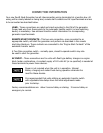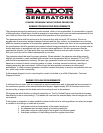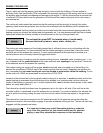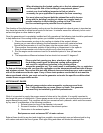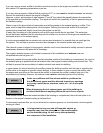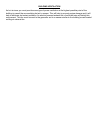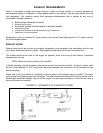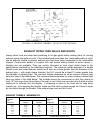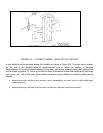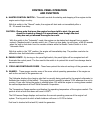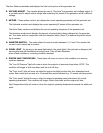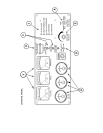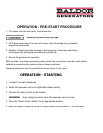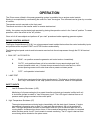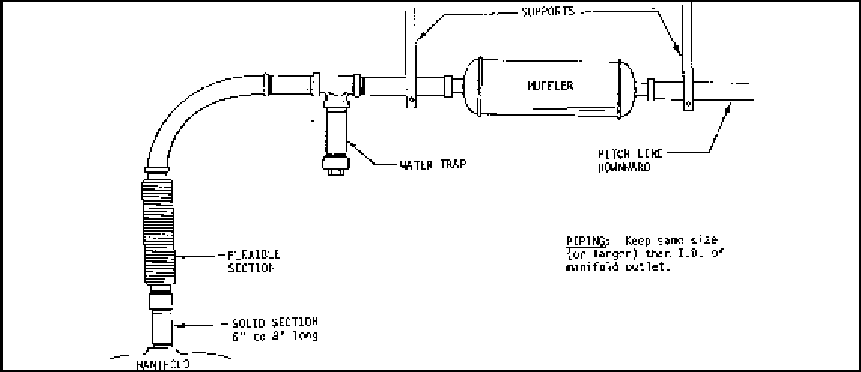
EXHAUST REQUIREMENTS
While it is important to supply the proper amount of clean air to the cylinder, it is equally important to
discharge the gases of combustion. If these gases remain in the cylinder, the next cycle cannot burn the
fuel completely. This condition results from excessive backpressure that is caused by any one or
combination of these conditions:
a. Exhaust pipe diameter too small.
b. Exhaust pipe too long.
c. Excessive number of sharp bends in exhaust system.
d. Inadequate muffler.
e. Incorrect construction of muffler resulting in high resistance.
f. Obstruction in exhaust system.
Backpressure must not exceed 20" (water column) on naturally aspirated engines or 27" (water column)
on turbo-charged models.
EXHAUST PIPING
Exhaust lines should be as short and straight as possible, since extended runs and elbows tend to clog
with carbon and resist the flow of gases. Each pipefitting and elbow will hinder the exhaust flow.
The muffler should be as close to the engine as possible, since it will clog up with carbon if operating
temperature is too low.
NOTE: Never mount the muffler on the manifold.
A flexible coupling must be provided between the exhaust line and the manifold. However, a short, solid
section of pipe between 6" or 8" long should be placed between the connection of the manifold and the
flexible coupling,.
Water, one of the by-products of combustion, will be present in the exhaust piping or muffler. This water
must be kept from draining back into the engine. This can be done by slanting the horizontal section of the
exhaust pipe downward slightly, away from the engine. A water trap consisting of a tee extension with a
drain cock should be provided.
FIGURE 6-1: SCHEMATIC OF EXHAUST SYSTEM




